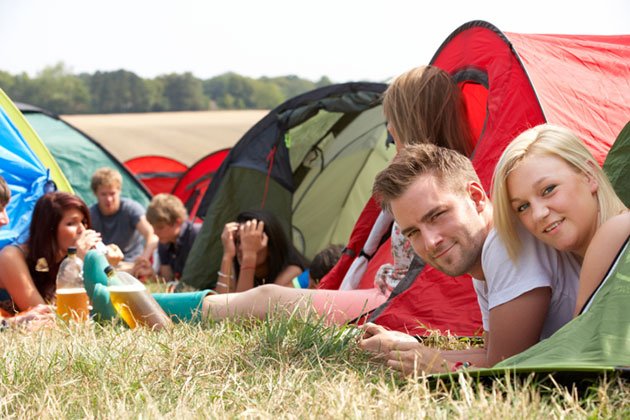If you’re planning your summer vacation time and you’ve decided to try something different this year by hitting the trail and communing with nature, you’re probably going to need some camping gear to turn your dreams of living off the land into a reality. After all, the average person isn’t prepared to sleep on the cold, hard ground under the stars. And whether you’re going solo, it’s a family vacay, or your friends are all on board for this adventure, you’ll want to make sure you have the right gear on hand so that everyone has a great time. Here are just a few shopping basics for newbies looking to experience the great outdoors on their first camping trip.
There are a few things you need to consider before you shell out the dough for camping gear. First and foremost, you need to have some idea about where you’re going to use it. The camping gear needed for cold weather versus warm weather climates will be different, for example. If you’re camping on the coastline of the Pacific Northwest, you’re definitely going to want a rain fly for your tent. If you’re camping closer to the equator, you may not want to use a subzero sleeping bag. So knowing the environment you’ll camp in is important.
You also need to think about your comfort level. Having a tent to keep the rain off and the animals out is a given, as is wrapping yourself up in a sleeping bag at night. But you might also want to bring a mat to sleep on. When you’re used to sleeping on a mattress each night, having rough, rocky, unforgiving ground underneath you could prove a rude awakening – literally. And what about sitting and eating? Do you want to do it on the ground or in the comfort of a camp chair?
Of course, practicality is also a consideration. If you’re hiking in to a campsite you’ll have to haul all of your gear, so economy is important when it comes to the size and weight of your pack. A portable camping stove is handy for cooking, but you could spare yourself a lot of weight by bringing matches or a flint and steel and finding firewood. Make sure to read labels so that you know the weight of your equipment, find out about returns and exchanges offered by retailers in the event that items don’t work for you, and consider shopping within a brand if possible so you can get items that are meant to go together.
And don’t forget about cost. When it comes to purchasing camping equipment you’ll have to decide where to save and where to splurge. If you live in a temperate climate, there’s no need to pay top dollar for a down bag that’s rated for subzero temperatures. You can save by purchasing a lightweight bag with synthetic fill. But if you’re looking for a lightweight tent for trips where you have to hike in to a campsite, it’s worth spending extra. Whether you’re buying food at the grocery store or medieval weapons from Swordsaxe, you have to be a smart consumer. The same is true when you purchase camping gear. So make sure you know what you want, how you plan to use it, and the use value you’re likely to get. This will help you to figure out what is a fair amount to spend.

